Joshua Project Step 1: Identifying the Peoples Where Church Planting Is Most Needed

Explanation of Joshua Project 2000 - Peoples List
The following seven-page list of peoples is offered as a beginning reference point for the goal of a church for every people by the year 2000. This list is the result of the major streams of missions research information beginning to flow together. It represents a unique level of cooperation among the leading missions researchers not seen in the past. All of those who have contributed to this list acknowledge that it needs refinement, correction, additions and deletions.
History of This List In October, 1992, Luis Bush, international director of the AD2000 and Beyond Movement, called together a small meeting of key unreached peoples researchers. The concern was that much of the research on unreached peoples was being carried on independently and there was little real sharing of information. Out of a genuine spirit of cooperation and interest in jointly producing a definitive list of peoples, including the unreached, the Peoples Information Network (PIN) was born. The eventual steering committee of this newly formed research cooperation was coordinated by Ron Rowland (Summer Institute of Linguistics/Wycliffe -- SIL) and chaired by Luis Bush. Other members included John Gilbert (Foreign Mission Board-Southern Baptist Convention -- FMB-SBC), Kaleb Jansen (Adopt-A-People Clearinghouse -- AAPC, now replaced by Keith Butler) and Pete Holzmann (Paraclete Mission Group).
Eventually four major sources of unreached peoples data began to flow together:
- Adopt-A-People Adoptable and Unreached Peoples containing about 4,500 peoples. PIN published this in rough draft and then in a bound format in cooperation with AAPC, SIL, FMB-SBC, USCWM and AD2000.
- FMB-SBC World Evangelization Database (WED). While probably the most extensive source of information, the terminology and definitions were originally slightly different than what other researchers used. The WED was updated and upgraded to a stronger evangelical perspective and merged with other databases to form the Integrated Strategic Planning Database (ISPD). Originally this data was not available, but has now become public with the most visible demonstration being Baptist leaders making the diskettes of data available to any GCOWE '95 (Global Consultation on World Evangelization) participant.
- SIL/Wycliffe Ethnologue data. SIL began developing a Registry of Peoples and Languages (ROPAL) using the Ethnologue as a starting point. The idea of ROPAL was to have a standardized, coded listing of all peoples with pointers to other sources for further information. ROPAL primarily views the world from an ethno-linguistic perspective.
- Patrick Johnstone's Operation World (OW) data. While some peoples data appears in Operation World, much more data has been gathered on unreached peoples by OW research.
During 1994, there were continuing efforts to encourage these four streams of data to merge or come up with a universally accepted target list of unreached peoples. The primary driving motivation was to have an agreed-upon list to present to the participants at GCOWE '95. In late November, 1994, the primary participants in PIN and other key missions researchers met in Colorado Springs and agreed to the basic concept of having each research group identify what they considered unreached peoples, combine all of those groups together, find the common overlap and consider that the initial target list. (See chart.) Therefore this list contains many, but not all, of the peoples that the primary researchers agree should be included. It represents the lowest common denominator and serves as an agreed- upon starting point. The primary use of the list is to serve as a global mobilization tool. Ron Rowland (PIN) undertook the merging of the data from the various researchers.
A document called "Significant Least-Evangelized Peoples" was produced for GCOWE '95 in May 1995 and distributed to all delegates meeting in Seoul, Korea. Yet there were still significant gaps, inconsistencies and inaccuracies.
Since GCOWE '95, the list has been further refined by John Robb (World Vision), John Gilbert (FMB-SBC), Ron Rowland (PIN), Todd Johnson (YWAM) and others to come up with the present list. The list of supporting comments (following this article) shows the level of confidence that these key missions researchers and others now have in this initial target list.
What the List IS The resulting list uses the following specific criteria. The list is ethno-linguistic-political, meaning that it recognizes cultural, language and national differences. For example, if a people speak two distinct languages they are considered two separate peoples, or if a people live in two separate countries they are considered two distinct groups. (Although similar in culture and language, the methods to penetrate these groups could be very different depending on the national political environment.) Thus, occasionally groups with the same name will be listed in several countries. For this listing, they are considered distinct peoples. Other strictly ethno- linguistic listings, not considering political boundaries, may only list such groups once.
As a starting point, only peoples having a population over 10,000 within a particular country are listed. Groups with populations below 10,000 will be considered in future revisions of this list. A second consideration is groups that most need the gospel.
What the List Is NOT This list is NOT a comprehensive unreached peoples listing. This is not meant to be the "end-all" list. Rather, it is the result of merging major streams of unreached peoples research and determining certain parameters such as the ethno-linguistic-political criteria and other considerations such as greater than 10,000 population and most needy of the gospel.
It should also NOT be assumed that the Great Commission would be fulfilled if every one of these groups had a viable, reproducing church capable of reaching the rest of this people. No one is predicting closure once the last group on this list is engaged and penetrated.
This list should not be used as a decision-making tool for missions funding or personnel deployment. A church should not ignore supporting missionaries to a particular group or area because a people does not appear on this list. Possibly the best way to penetrate some of the groups on this list is through small clusters of these peoples located in many major metropolitan cities around the world. The best doorway to the Kazakh people could be through, let's say, a group of Kazakhs living in Portland, Oregon. While the centers of population or homeland of these peoples is on the list, possibly the best way to reach them is through a doorway open in a totally different part of the world!
While this list represents a particular way of looking at the unreached peoples picture, there are also other valid perspectives. One perspective could be a strictly linguistic view (a major concern of Scripture translation), and this would produce a different list. Another approach could be an ethno-linguistic view ignoring political boundaries, yielding yet another list. Or a social element could be added to the ethno-linguistic-political criteria that would significantly expand the list to possibly 10-12,000 unreached groups. Such lists, viewing the unfinished task from various perspectives, should not be looked at as contradictory, but rather complementary.
Known Gaps There are several known gaps and omissions that were not finalized / resolved before going to press. There is a gap of Native Americans. Twenty groups have been submitted for addition to the list, but the review process was not complete by press time. The following Native American groups are being reviewed for potential inclusion: San Carlos Apache, Hopi, Pima, Tohono O'odham, White Mountain Apache, Pasqua Yaqui, Paiute, Agua Caliente, Black Feet, Shoshone, Crow, Flathead, Nez Perce, Onida, Lakota Sioux, Dakota Sioux, Southern Ute, Ute, Zunis and Pueblos.
The country of India is also in the process of further review by key Indian mission researchers. They have a number of corrections / revisions that were not finalized by press time. Also several Arab leaders have expressed the need for careful review of the Arab section of this list. There is also significant new research information from the Adopt-A-People Clearinghouse that will be reviewed for future inclusion.
Given the least common denominator approach, many groups appearing on several, but not all, research lists will be given careful consideration for future inclusion in this list. These gaps will be addressed in the next several months; changes that result will be reflected in the next annual update of this list, due in April 1996.
Editorial Process You can have input to this list! Please submit any corrections, updates or proposed inclusions to: John Gilbert 3806 Monument Ave. Richmond, VA 23230 USA Fax: 804-254-8980 E-mail [email protected]
An editorial review board of Ron Rowland, John Gilbert, Keith Butler and Patrick Johnstone will evaluate all submitted information for inclusion in future revisions of the list.
Some Specifics Currently 1,685 peoples appear on this list with a total population of about 2.2 billion individuals comprising 40% of the global population. Nearly 70% of the peoples and 90% of the individuals on this list live within the 10/40 Window.
While only a small bit of information about each group is listed here, there is significant other data now being compiled. For example, most of the groups now have a latitude and longitude and map references provided by a joint project of Global Mapping International and SIL. The current database has other information, such as alternate names, languages, dialects, populations and cultural information on many groups. Available ministry resources are also being tracked, such as Scripture translation, Scripture audio recordings, Christian radio broadcasting, Jesus film and people profile availability.
The data in many senses should be considered "fuzzy," and the exactness of certain numbers can be misleading. Some of these numbers are derived from other numbers or are only as accurate as possible estimates. Please note that when zeros appear in the data it can mean one of two things: either the data is actually zero or is unknown. Most of the zeros under evangelical Christians are an unknown, albeit very small number, rather than actually zero.
In Conclusion The key researchers contributing to this list are committed to making public a revised, improved listing each April for the next several years. It cannot be too strongly reiterated that this list is not perfect and has potential gaps, inaccuracies and omissions. It comes from a very particular ethno-linguistic-political perspective with specific criteria of greater than 10,000 population and most needing the gospel. It is the desire of those producing this list that its publication in Mission Frontiers will not be seen as a final product or the end result, but only as part of a process toward greater accuracy and acceptance and ultimately that the "glory of the Lord would cover the earth as the waters cover the sea" (Habakkuk 2:14).

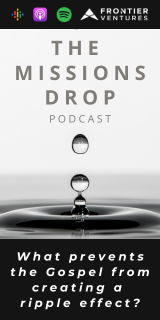
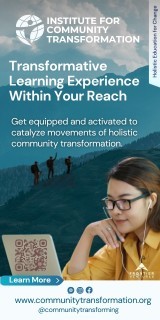
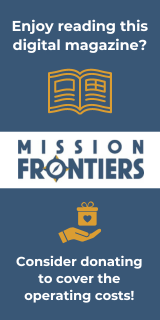
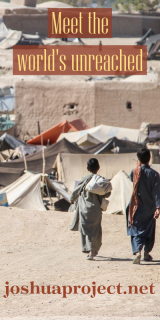
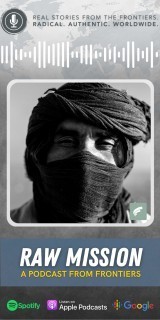
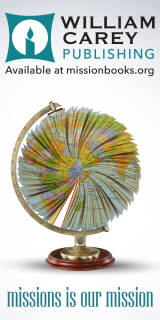
comments